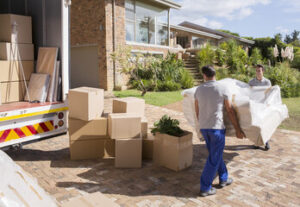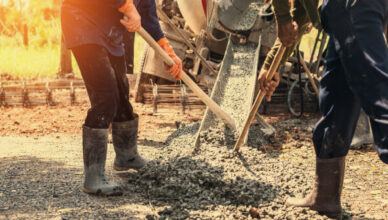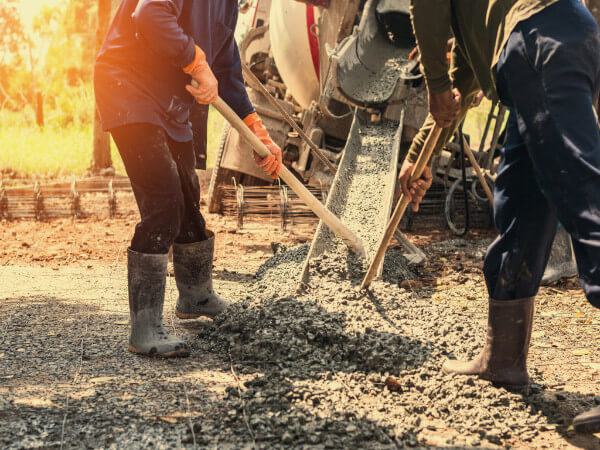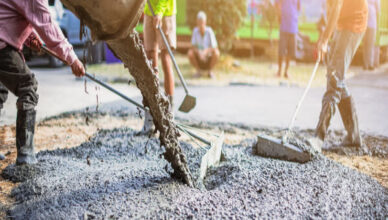You need a professional concrete contractor to complete your job. But where do you start? This article will guide you through the pre-concrete conference, safety regulations, and qualifications for a concrete contractor. We’ll also talk about costs. But what should you be looking for in a concrete contractor? Read on to find out! Hopefully, you will find the right contractor for your next project! Just remember, quality doesn’t come cheap!
Pre-concrete conference

If you are in the concrete or masonry industry, you should attend the World of Concrete 2020 conference to learn the latest trends and techniques. This annual event features networking opportunities, technical training, and professional development workshops for all facets of the industry. Approximately 60,000 attendees are expected to participate, representing all industry segments. From commercial contractors to concrete pumpers, project managers to decorative concrete contractors, engineers to architects, and specialty contractors attend the conference to enhance their knowledge of best construction practices.
There are many reasons to attend this event, including its global recognition and the fact that it is the most comprehensive gathering of the industry. The Expo offers networking opportunities, education sessions, tours, and entertainment. This event is also important to the construction industry, as the global construction industry is experiencing a huge surge in tall buildings.
The agenda for a pre-concrete conference should include the name and address of the project. Other attendees should include the project manager, owner’s representative, general contractor, concrete subcontractor, pumping contractor, and testing lab supervisor. All of these individuals should be present and able to answer questions. If you’re unsure who to invite to the conference, the agenda should include everyone who needs to know.
The World of Concrete is the largest and first international event for the commercial construction industry. This event features educational sessions on the latest innovations and heavy machinery, skill-building workshops, and management seminars. Attendees can also learn how to manage their companies and meet other professionals in the industry. So, get your conference tickets today! It’s the perfect time to update your skills and learn about new innovations and products. This is an important industry event and will make you the most informed concrete contractor in your area.
Safety regulations
The Occupational Safety and Health Administration’s (OSHA) Subpart Q includes extensive safety regulations for concrete contractors. Many of the requirements seem common sense, and responsible contractors may even feel they do not need them. But safety regulations are critical for planning your projects. OSHA prohibits employees from riding in concrete buckets; there are many other examples of how safety regulations affect contractors. In addition to providing a basic safety plan, these regulations help you protect yourself, your customers, and other workers from possible risks.
While many employers fail to follow these regulations, implementing a thorough safety analysis is vital. OSHA recommends addressing each hazard issue in turn and meeting or exceeding industry safety standards. Visit MCR Safety’s concrete and construction industry pages for more information, and follow their advice to ensure your workers’ safety. And don’t forget to wear proper protective gear. Those precautions will prevent a multitude of accidents. You can also check out the most recommended safety gear on their website.
The OSHA Subpart Q contains specific standards for concrete contractors. These regulations include tools and equipment needed for the job, and formwork and precast concrete. Exposure to concrete dust can lead to a variety of health problems. It can cause respiratory distress, eye irritation, and occupational asthma. Workers should wear respirators if they’re working with cement. OSHA also states that workers must wear eye protection and respiratory protection. Regardless of the type of protective equipment they use, concrete dust can still cause a variety of health issues.
Safety regulations for concrete contractors are an important part of the work of any company. OSHA’s Alliance Program and Strategic Partnership Program have both developed pages specifically for the concrete industry. These pages contain relevant OSHA standards, directives, and interpretations. They also identify the major segments of the industry and highlight the leading workplace hazards. Links to additional resources can be found on these pages. There’s no need for you to hire an outside consultant to do your safety and health assessments.
Qualifications
Before you hire a concrete contractor, there are several things you should know about their training and experience. First and foremost, you need to know how to use concrete equipment and tools. Second, you need to know how to install waterproofing for your concrete work properly. Third, concrete work is time-sensitive, and you need to be focused throughout the day. Fourth, concrete contractors must be well-trained in the processes involved. Finally, you should know what to expect during the hiring process.
The basic qualification for a concrete contractor is a bachelor’s degree or related academic certification. Experience in a construction-related field is a must as well. In addition, contractors must be over 18 years old, have at least two years of experience working with concrete, pass a written test, and be financially stable. Also, they should have a business plan and have enough money set aside for their business to stay afloat.
When interviewing concrete contractors, be sure to ask about their experience in your area. Ask them for examples of their work. Often, concrete contractors will show you pictures of their work. Some of them may have a digital portfolio. Ask to see these as well as their portfolio. If a concrete contractor is confident of their abilities, you can hire them to complete your project. If they cannot demonstrate their experience, move on to the next contractor.
In addition to certification, you should also look for certifications. ACI, NICMEA, and ASCC all recognize certifications for concrete contractors. These credentials guarantee superior performance, safety, and competence. Lastly, it would be best if you looked for a contractor who has received training from a nationally recognized, accredited organization. A credential from these organizations is an excellent indicator of a concrete contractor’s knowledge and skills. A certified concrete contractor will have the knowledge and experience necessary to properly install concrete in any building or structure.
Costs
Before you hire a concrete contractor to complete your home project, you should know what to expect. A large portion of the cost of a concrete job will go towards the cost of building forms. The process involves a lot of labor, equipment to move the materials, and form release product. You’ll also pay for the cost of repairing form materials after multiple uses. For this reason, the cost of building forms can add up to $1.10 per square foot. Be sure to ask about your options and get as many quotes as possible.
Concrete construction costs depend on many factors, including the location, formwork, reinforcing materials, and finish work. While each of these factors contributes to the total cost, they do not always reflect the exact costs involved in constructing a concrete structure. Although these factors are often important to understand, they can only be estimated with adequate information. If you’re unsure of your exact needs, call several concrete contractors to get a better idea of the costs involved.
The cost of concrete can vary widely, depending on the mix design and the amount of cement used. Generally, a six-inch slab costs between $3.50 and $5.50 per square foot. However, these figures depend on the size of the project and the number of workers and machinery needed. The cost of a concrete slab depends on several factors, including the thickness of the concrete slab, reinforcement, and the mix characteristics. To get an accurate estimate, you can use a concrete calculator.
The costs of concrete contractors vary dramatically depending on the area. In New York, concrete contractors are among the most expensive in the country. Ohio, on the other hand, is the cheapest. You can get up to five quotes by using the internet. You can read more about concrete contractors by reading this blog. Then, contact a few concrete contractors in your area and compare their prices. And don’t forget to read the testimonials of the contractors to get the best possible quote.
Experience
When hiring a concrete contractor, the company’s experience is a vital factor to consider. While a newer, less expensive contractor might be more attractive, experience is essential for ensuring quality work that stands up to wear and tear. Moreover, experience also helps determine how satisfied the customer will be with the final result. Listed below are some characteristics of a good concrete contractor. This is not a comprehensive list of qualities you should look for in a concrete contractor.
Ask for references. A good concrete contractor should be able to provide at least five references from past clients. Getting references from previous customers is a great way to determine if the contractor is reputable. Ask for references from several clients and request them to speak with you in person about their experience with that particular company. You can ask them specific questions about their work and whether they have experience doing residential projects. Make sure to ask them about their insurance coverage as this will give you an idea of how much protection you have as a client.
Quality work can be the difference between a great concrete job and a bad one. A good concrete contractor can guarantee quality work and a great end result. Experienced concrete contractors know how to perform different stages of concrete construction, from planning to finalizing the project. Additionally, they have the tools and experience necessary to design intricate plans and produce custom products that meet the homeowner’s specifications. A concrete contractor can also be very helpful in saving time and money.







 Professional residential movers are licensed and insured, protecting you, their employees, and your belongings. In addition, they are experienced in moving items of varying sizes and have the tools necessary to transport your items to your new home safely. This makes them the ideal choice for a local move, as they can reduce your stress and help you save time and money.
Professional residential movers are licensed and insured, protecting you, their employees, and your belongings. In addition, they are experienced in moving items of varying sizes and have the tools necessary to transport your items to your new home safely. This makes them the ideal choice for a local move, as they can reduce your stress and help you save time and money.




